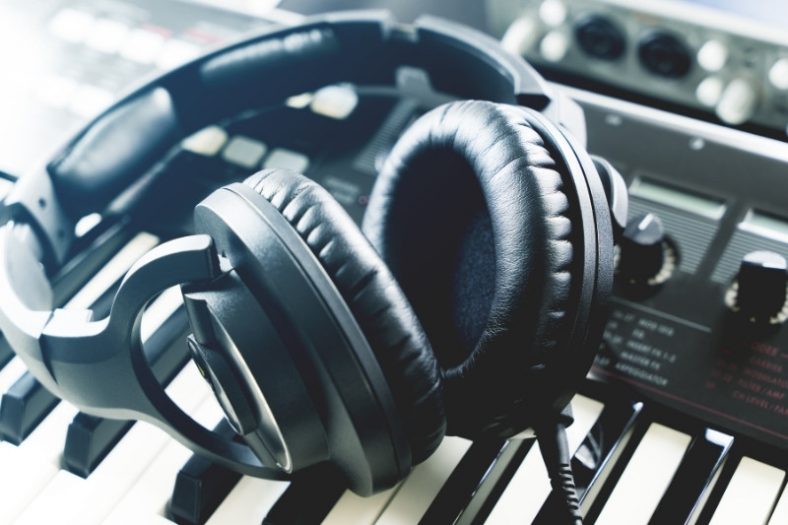80 Ohm vs 250 Ohm Headphones – Which is Better?

Impedance is the resistance of a circuit or device to alternating current. In simpler terms, it refers to the resistance to electricity. Impedance is measured in Ohms (Ω), which is the standard unit of electrical resistance.
In audio, higher Ohms make for a more transparent sound, with better bass definition and a wider speaker image. Lower Ohms are easier to drive, but they’re also more sensitive to the quality of the equipment and more easily distorted.
Contents
What is headphone impedance?
Headphone impedance refers to the resistance to the electricity of a given headphone set.
Headphones with lower Ohms (such as 32 Ω) can be driven by devices as simple as a phone without losing quality. But once you plug them into a professional audio interface, they will sound very loud and distorted.
Headphones with higher Ohms (such as 250 Ω) need to be driven by high-quality audio equipment but offer higher frequency response and sound quality. However, they can be nearly inaudible when connected to a phone or low-quality computer sound card.
What does Ohm mean in headphones?
Ohm (Ω) is the unit of electrical resistance of a set of headphones. Commercially-available headphones tend to have anywhere between 32 Ω and 250 Ω.
Headphones with lower Ohms can be effectively used with low-grade audio equipment such as computer/phone speakers, but they will “blow up” when driven by an audio interface or advanced sound card. This means that they will sound very loud and distorted if driven by equipment with a high level of alternating current.
Headphones with higher Ohms are more versatile and can be effectively used with professional-level audio equipment. However, they require a lot of power to be driven, which means they will not work correctly when paired up with audio equipment with a low level of alternating current.
What differences does it make?
The main difference between using headphones with low Ohms and headphones with high Ohms is in volume and sound quality.
Headphones with lower Ohms tend to be louder and are very sensitive to amplification. This means that they will effectively make a .mp3 file on your computer speakers sound very good, but that they will sound distorted and unbearably loud when connected (for instance) to a USB audio interface.
Headphones with higher Ohms are less sensitive to amplification since they require a high amount of alternating current to work properly. They’re much quieter than headphones with low Ohms, which means they can be connected to professional audio equipment without distorting. They do require amplification, though, meaning they can be utterly useless for listening to music on phone/computer speakers.
Differences between 80 Ohm vs 250 Ohm Headphones
The difference between 80 Ohm and 250 Ohm headphones is that the first ones require less power from an amp, while the latter demands a lot of power from audio equipment. Both sets of headphones can reproduce sound with very decent quality, but which one is the best? Well, that depends on what you expect to get from them…
80 Ohm headphones: the perfect middle ground
Headphones with 80 Ω make for a solid all-around choice because they can cover most audio functions adequately. However, they’re not quite there if producing and mixing studio-level tracks is your main goal.
Advantages
- 80 Ω headphones can be connected to any phone/computer speakers and sound good, and they also work with more advanced equipment such as USB audio interfaces. For this reason, they’re the perfect middle ground for people looking to buy an all-purpose set of headphones.
- The volume of 80 Ω headphones will not sound too quiet or too loud, regardless of the equipment they’re connected to — unless you’re using some rare piece of vintage equipment with extremely high alternating current.
Disadvantages
- 80 Ω headphones don’t have the necessary frequency response to produce and mix tracks at the highest level. They can be used for professional audio monitoring, but they shouldn’t be trusted for professional audio engineering functions.
250 Ohm headphones: the best choice for pros
Headphones with 250 Ω are not meant for casual music listeners. Yes, they’re the headphones with the best frequency response and speaker image. But unless you’re an audio pro, you’ll probably not need them.
Advantages
- When connected to proper audio equipment, 250 Ω headphones offer a clean, transparent sound with highly-perceivable bass and a volume response that’s perfectly suited to a studio environment.
Disadvantages
- 250 Ω headphones require a lot of power from your headphone amp, which means they will be mostly useless when paired up with regular phone/computer speakers or a low-grade sound card. To put it lightly, don’t expect them to work at all if you’re planning on listening to music on the subway…
- Producers who are accustomed to listening to their tracks at a high volume may feel like 250 Ω headphones are not sufficiently loud. But as any professional audio engineer will tell you, quieter, high-quality monitoring makes for better mixes than loud, punchy monitoring.
Do you need a headphone amp for 80 Ohm headphones?
Unlike 250 Ω headphones, 80 Ω headphones will work nicely without amplification, which means they can be plugged into virtually anything. However, 80 Ω headphones are designed for being used with mid to pro-level audio equipment, such as gaming sound cards and USB audio interfaces. To get the best of your 80 Ohm headphones, you should consider buying a nice headphone amp.
Summary
To sum it up, it all depends on what you’re planning on doing. 32 Ω headphones will work nicely for listening to music on your phone and computer. 80 Ω headphones make for a good all-around set of headphones, ideal for tasks like gaming, podcast recording, and basic music production. 250 Ω headphones are the best choice for dedicated music producers and audio engineers, but keep in mind you’ll need high-quality audio equipment to make them work properly.





